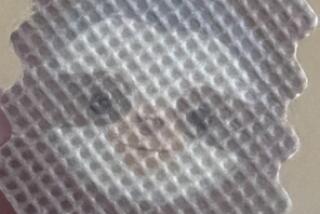More than half of U.S. kids don’t get dental sealants, and the CDC wants schools to change that

Elementary schools can save nearly $50 per student by bringing in dental professionals to put sealants on their molars.
How can elementary schools save nearly $50 per student? By bringing in dental professionals to put sealants on their molars, federal health officials said Tuesday.
If that doesn’t sound like an education-related problem, consider this: Cavities that go untreated cause kids to do worse in school.
For the record:
6:49 a.m. Aug. 23, 2019A previous version of this story said the first molars are next to the canine teeth. That is the location of primary first molars. Permanent first molars are next to the primary second molars.
A study in the American Journal of Public Health found that students whose oral health was rated “good, fair or poor” were about three times more likely to miss school because of dental pain compared with kids with “very good or excellent” oral health. What’s more, kids who stayed home with toothaches were nearly twice as likely as their peers to earn mostly Cs, Ds and Fs in school.
Cavities are a risk for all kids, regardless of income level. Dr. Tom Frieden, director of the Centers for Disease Control and Prevention, called cavities “one of the most common chronic conditions among kids in this country.”
Molars are particularly vulnerable; these teeth do most of the chewing and are the most difficult to reach and clean. Indeed, nearly 90% of cavities are found on molars, experts say.
Sealants can reduce the risk of cavities by 81% over two years and keep fighting cavities for up to nine years, according to the Community Preventive Services Task Force, part of the U.S. Department of Health and Human Services. These plastic coatings cover the pits on top of molars, creating a barrier between the tooth and the bacteria that cause tooth decay.
You can think of sealants as a vaccine for teeth, Frieden explained.
“It’s a way of preventing cavities,” he said.
But the majority of school-age kids in the U.S. don’t get them, according to the CDC Vital Signs report released Tuesday.
Data from the National Health and Nutrition Examination Survey show that only 39% of low-income children have them, along with 48% of higher-income kids.
More sealants mean fewer fillings. The NHANES data show that among higher-income children who have at least one sealant, the average number of permanent first molars (the ones next to the primary second molars) with a cavity or a filling is 0.19. For higher-income children without sealants, that figure is 0.52.
Among low-income kids, the average number of first molars with a cavity or filling is 0.29 for those with at least one sealant, and 0.82 for those without any sealants.
If all low-income children ages 7 to 11 got sealants on all their first molars, each of those kids would have 0.52 fewer cavities on average.
Despite this, low-income kids aren’t likely to get sealants at a dentist’s office. That’s why states should expand programs to make sure students in need can get them at school, the Vital Signs report said.
Each sealant given to a low-income student saves $11.70 in dental costs over four years. That means school-based sealant programs pay for themselves within two years, according to the report.
Nationwide, if all 6.5 million low-income kids who don’t have sealants were to get them, schools would prevent about 3.4 million cavities, the report authors estimate.
It would also save nearly $300 million in dental treatment costs, Frieden said.
Before coming to the CDC, Frieden served as commissioner of the New York City Department of Health and Mental Hygiene. In that role, he expanded school-based sealant programs in the nation’s largest city. “They work,” he said.
But the Vital Signs report acknowledged that “few schools offer these programs.” Cost is a major reason, even though state Medicaid programs can help cover the costs of treating students who qualify for free or reduced meals. States could save money by allowing dental hygienists or therapists to handle the work instead of requiring a dentist to do it, the authors wrote.
“The bottom line is that a simple coating painted on the back teeth can keep children from getting most cavities,” Frieden said.
Follow me on Twitter @LATkarenkaplan and “like” Los Angeles Times Science & Health on Facebook.
MORE IN SCIENCE
By adding an antibody to HIV treatment, researchers send virus into ‘sustained remission’ in monkeys
How to counter people with extreme views: Try agreeing with them







